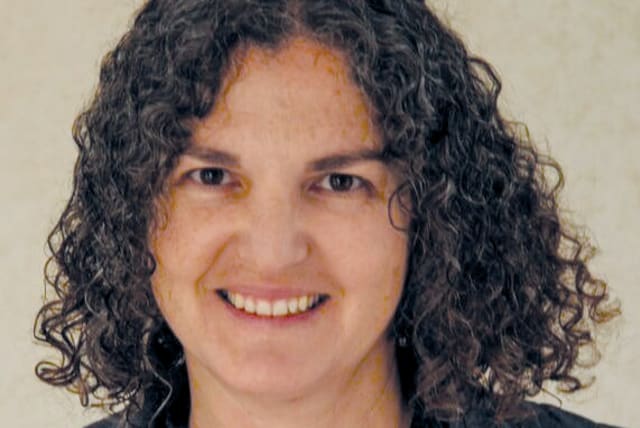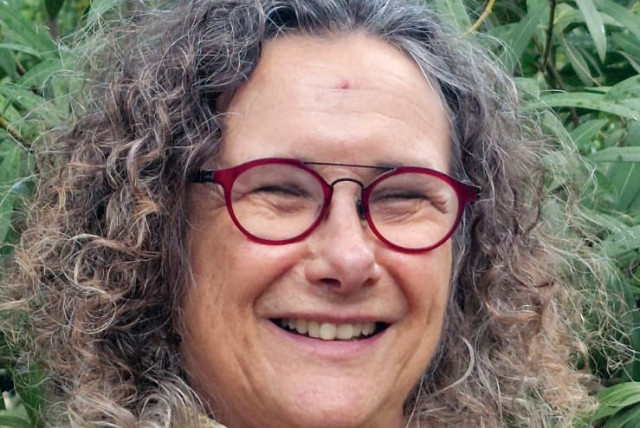When Hamas attacked on October 7, three female rabbis responded

Three leaders, three communities, three stories of resilience: How three female Reform rabbis acted on October 7.
Rabbi Yael Vurgan
Rabbi Yael Vurgan was preparing for a bar mitzvah ceremony on Saturday when the devastating October 7 attack struck her congregation. As the Reform rabbi of the Sha’ar Hanegev Council, located along the Gaza Strip, Vurgan spent the day desperately trying to determine which of her congregants had been killed or abducted. The attack ultimately claimed the lives of 87 residents of Sha’ar Hanegev, and 26 were taken hostage. Seven remain in captivity. Just four days earlier, on Sukkot, Vurgan celebrated a unique communal joy she had dreamed of doing for a long time.
“We held a Torah honor ceremony for six elderly people – men and women over 80 who had never celebrated a bar mitzvah, with an aliyah to the Torah. We wanted to celebrate people’s connection to the Jewish tradition and Torah, specifically in the days leading up to the completion and restarting of the Torah reading cycle,” she recounts.
On the morning of the attack, she was at home in Modi’in, 30 kilometers west of Jerusalem, when she received the first phone call at 6:45.
“At first, it sounded like a routine rocket attack like the kind they have constantly,” she recalls. “It’s sad to say, but they are used to it. However, I soon realized that it was something else this time. People were texting me from their safe rooms.”
Her friend, the council’s mayor, Ofir Libstein, was one of the first casualties, murdered when he ran out of his house to protect Kibbutz Kfar Aza. The kibbutz suffered a devastating loss with 67 casualties, including Libstein’s son, Nizan, whose body was discovered 12 days later.
“Ofir Libstein, the head of our regional council – I can hardly even say ‘former’ – was such a special person. He always embraced you and tried to attend to all our needs. He understood us and ensured the Jewish diversity of the regional council. His loss is profound, and I will miss the personal connection he offered every resident – always kind, bright, and warm. During one of our meetings, when I mentioned establishing a permanent structure for the Reform community, he said, ‘We will build a home for you.’ That sense of home was very important to him.”
In the attack’s aftermath, Vurgan changed course and dedicated herself to supporting her dispersed congregation across Israel, listening to their pain and offering solace at funerals, shivas, and memorials.
“Sha’ar Hanegev is like a big family,” she says.
“The community needed a shoulder to cry on and an ear to listen. I wanted to be the Jewish voice for those whose world was destroyed,” she says. “Every single event is very emotional, and I’m there to hold all these emotions, give them a place.”
Vurgan, ordained five and a half years ago at the Hebrew Union College in Jerusalem, was initially reluctant to assume the position of rabbi in Sha’ar Hanegev. It’s an area in the northwestern Negev consisting of 10 kibbutzim and one moshav, bounded by the Gaza Strip to the west. Its population is over 9,000, and it covers approximately 70 square miles.
“But they insisted that I take it. I didn’t have many other options, and I needed a job,” she says.
She remained living in Modi’in and commuted an hour each way three times a week to her spread-out congregation.
“When I started to get to know the area and its residents, I fell in love, and a year after my ordination I was already walking around thinking that I was the happiest rabbi in the world, with the best job in the whole world.”
Growing up in a secular Israeli family and later experiencing Reform Judaism in the United States, Vurgan found a spiritual home in the Reform Movement.
“It felt right. It’s the place that brings together secular and Jewish traditions. It’s living a meaningful traditional way of life and being involved in wider issues of society, social justice, the struggle for equality. I found a place where it all connected. I don’t have to give up anything. I can express my deep passion for Jewish texts and rituals and my deep passion for other social justice issues. I can be myself.”
On a recent Friday night service, as a clear vote of confidence in the future of Sha’ar Hanegev, Vurgan dedicated a new Torah scroll donated in honor of the murdered mayor, Ofir Libstein. The ceremony was held in Kibbutz Shefayim, north of Tel Aviv, the temporary home of the Kfar Aza evacuees.
Jeffrey Ornstein, chairman of the Memorial Scrolls Trust in London, personally delivered the scroll to Israel. The trust oversees the allocation of historical Torah scrolls that had survived WW II in Prague to congregations around the world.
This scroll, says Ornstein, is small, easy to carry, and was made kosher before its trip to Israel. It’s not one of the Czech scrolls, but one written in Israel in the early 20th century in Sephardi style.
“Sofrim in London examined it and told me the scroll was written by an experienced Egyptian or Algerian scribe, who was left-handed,” says Ornstein.
“Although the residents of Sha’ar Hanegev are spread out throughout the country, this Torah scroll, while small, will be a symbol of strength, a sign of renewal of the community,” he says.
Rabbi Vurgan reflects on the significance of the moment.
“It is especially painful that Libstein, in whose veins this magical place flowed, ultimately died defending it. We will return and build a home here.”
Rabbi Orit Rozenblit
From the window in her home in Metulla, Rabbi Orit Rozenblit has a pastoral view of Lebanese villages that dot the hills on the other side of the border. Metulla is one of Israel’s most charming towns, with a quaint European alpine village vibe, red-roofed houses, and orchards of plum, apple, and kiwi surrounding the town. To the east towers Mount Hermon, snow-capped in winter. Below, the verdant fields of the Hula Valley stretch as far as the eye can see. And to the west and north, Lebanon’s villages and mountain ranges seem like you can reach out and touch them. It is the only place in Israel surrounded on three sides by an international border.
And that is precisely the problem.
On October 7, with fears growing of a second front opening with the Iran-backed Hezbollah, it became clear that Metulla’s residents must evacuate at once.
“We couldn’t stay at home just 400 meters away from the border,” says Rozenblit. “From the window of my house, you can see cars driving down the road in Lebanon.”
Both her sons were mobilized that day. In the weeks that followed, her nephew was killed.
Since the war began, she has spent her time visiting the temporary homes of the Kiryat Shmona Regional Council evacuees. Unlike southern residents, who relocated as communities, her congregants are scattered across the country, refugees in their own land.
“My worry for all our brethren intensified because suddenly, it was happening in my home, too. Every Shabbat, our community prays for the safe return of the kidnapped, the healing of the wounded, and the success of our soldiers, and I also pray privately for my sons wherever they may be in Gaza.
“I call and visit all the members of our community. People seek a sympathetic ear to listen to them and alleviate the uncertainty. People want to know what will happen next; and since the state currently can’t provide that, we need to provide a backbone for our community. The situation is frustrating and infuriating, but I try not to show those feelings to my community – only warmth, connection, and love.”
Rabbi Rozenblit, 64, ordained four years ago in Jerusalem, had been in the “Jewish renewal business,” as she puts it, for more than 30 years.
“I never thought I would become a rabbi,” she says.
In 2010, she had established a beit midrash in Haifa, a secular yeshiva for young adults. Since she was teaching Judaic studies anyway, she decided that becoming a rabbi would widen the range of her abilities, enabling her to lead prayers and read from the Torah.
Of the six rabbinical students in her class at the Hebrew Union College Institute of Religion in Jerusalem, five were women.
“In the first few days [of the war], I saw my congregation spreading around Israel,” she says. She followed them to the hotels where they were temporarily housed, doing weekly Torah portion studies and giving comfort where she could.
“The very evacuation from our homes is a searing experience. We feel like a body without a spine. A community without a home.”
Rabbi Alona Nir Keren
Rabbi Alona Nir Keren, whose congregation Kehillat Kamatz is situated in the rolling hills outside Jerusalem, is far from the southern and northern borders.
However, her community joined the war effort first by providing support, hospitality, food, and clothing for the many southern residents evacuated to the Jerusalem area with nothing but the clothes on their backs. However, the exceptionally unique initiative arose from another need – the need to adapt religious services for the hundreds killed in the bloody campaign.
“When we realized that the religious needs of all the fallen are varied – some religious, some secular, some Reform, some not even Jewish – we understood that we have to do something so that everyone gets the response specifically suited to them. So we set up a team that includes clergy from all denominations – Orthodox rabbis, Ashkenazi and Sephardi, Reform rabbis and clergy, and even Muslim religious leaders – so that we can provide a comprehensive response.”
Nir Keren was born and raised in the Haifa area. During her childhood, she visited a synagogue about once a year, usually from the outside. As a registered travel guide, she encountered a different kind of Judaism for the first time when leading a group of liberal British Jews around Israel. She was ordained in Jerusalem in 2016.
Part of her job during the year is to provide spiritual guidance for whoever wants it.
“For example, we went to the shiva house of a soldier when we found out that his parents were divorced and his father was a traditional Sephardi. It was clear to us, Reform rabbis, that we could do nothing there and sent our team’s Sephardi rabbi instead. And we’ve had the opposite scenario: We went to shivas at two kibbutzim where we fit right in.”
Rabbi Nir Keren recalls that one of the most moving moments occurred in the mourning tent of a young man named Majd Ibrahim. He was killed by a rocket attack in Abu Ghosh, an Arab village close to her home.
“What was very significant was that even though the Orthodox rabbi originally didn’t want to come, his wife came with me, and it was clear to her that she was coming with me. Through our cooperation and Neighbors program that creates joint Jewish-Arab activities, we have created such an important network of cooperation and social ties that proves itself, and the necessity for it, in times of routine and, sadly, also times of disaster.”■
Jerusalem Post Store
`; document.getElementById("linkPremium").innerHTML = cont; var divWithLink = document.getElementById("premium-link"); if (divWithLink !== null && divWithLink !== 'undefined') { divWithLink.style.border = "solid 1px #cb0f3e"; divWithLink.style.textAlign = "center"; divWithLink.style.marginBottom = "15px"; divWithLink.style.marginTop = "15px"; divWithLink.style.width = "100%"; divWithLink.style.backgroundColor = "#122952"; divWithLink.style.color = "#ffffff"; divWithLink.style.lineHeight = "1.5"; } } (function (v, i) { });

